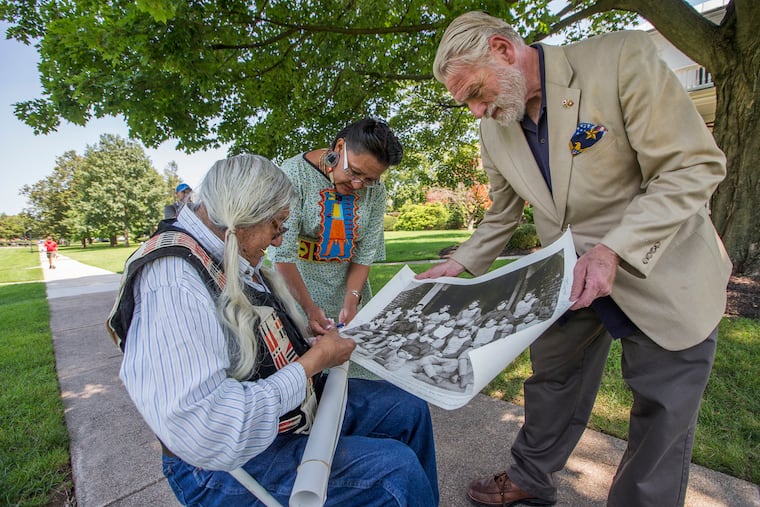Skip ‘Black Friday’ and celebrate Native American Heritage Day | Opinion
Although 325 Native reservations are sited mostly in remote areas nationwide, 72% of indigenous Americans in the U.S live mostly unnoticed in urban and suburban areas.

Most Americans think of the day after Thanksgiving as Black Friday, but it’s another national holiday — Native American Heritage Day.
That Friday on the calendar could be “Blank” instead of “Black,” because many Americans—40%, according to one survey—don’t believe Native Americans still exist!
But we do. Over 5 million of us live in 37 states. Like the rest of the country, we’re a diverse people living in cultures shaped by hugely different environments and experiences. Knowing that should help explode all the myths, misinformation, and stereotypes about us that abound in history books, popular culture, and non-indigenous minds. No, we don’t all wear blankets and feathers. No, we don’t all live in tepees and hunt buffalo. And no, we aren’t the whooping, red-painted, tomahawk-waving savages portrayed by sports fans at games of the over 1,000 schools that still have belittling, cartoonish “Indian” mascots.
» READ MORE: In Pennsylvania public schools, an ‘epidemic’ of Native American mascots and nicknames
But yes, we are still here. What’s more, our rich legacy of inventions, discoveries, values, customs, and language is everywhere. Twenty-six of the United States are named for us. Millions of Americans live in towns, cities, and counties — even on streets — bearing our names. Every day they see rivers and mountains and lakes and other geographical features named for us. They eat our ancient foods (popcorn, anyone?), walk in our footwear, play lacrosse and our other sports, practice our arts and crafts, and follow our health practices and social customs.
Today, 574 federally recognized Native Nations are spread over the vast landmass that is our country. Although 325 reservations are sited mostly in remote areas, 72% of indigenous Americans in the U.S live mostly unnoticed in urban and suburban areas.
We live, work, and dress like you. We also look like you. Our skin, eye, and hair color comes in all tones. In William Penn’s account of the Lenni Lenape or Delaware Indians, he described my people, the Lenape, or Delaware, as being as fair as Europeans but with a tan.
Indigenous people become more visible in November, which is Native American Heritage month, and especially around Thanksgiving, arguably our nation’s most iconic holiday. We imagine neighborly Wampanoag Indians sitting around a big table with Pilgrims, sharing the turkey, pumpkin, corn, and cranberries they brought to the feast. But let’s take another look at that pretty picture.
It’s true that the Wampanoag and other Indians shared the protein-rich, highly nutritious foods they had cultivated over centuries with the early colonists. They also shared much else. In fact, historians say that if early European settlers encountered what they expected — an uncultivated wilderness roamed by nonhuman savages — they could not have survived.
» READ MORE: Telling a Native story from Native perspectives: Revisiting Pennsylvania’s Conestoga massacre | Opinion
In her award-winning book, An Indigenous Peoples’ History of the United States, Roxanne Dunbar-Ortiz writes that long before Europeans came, vast numbers of indigenous people “had developed towns, farms, and networks of roads, with villages that were part of nations and federations of nations that had varied, highly sophisticated systems of government and diplomacy.” Some trails frequented for trade — like those used by my people, the Lenape — still exist today.
Dunbar-Ortiz and others have documented that almost everything not willingly given by our Native neighbors was taken from them. Settlers stole “already cultivated farmland and the corn, vegetables, tobacco and other crops domesticated over centuries….used existing roads and water routes in order to move armies… and relied on captured indigenous people to identify the locations of oyster beds, and medicinal herbs.”
As for the first Thanksgiving, what we think we know just isn’t so. There’s no evidence to suggest the first official Thanksgiving Day was a festive gathering to which Pilgrims generously invited Indians.
» READ MORE: Kamala Harris follows Kaw Nation’s Charles Curtis as the second person of color to become vice president
And it wasn’t the food Indians brought to that mythical feast that was their first, indispensable contribution to America. The gift they gave was the entire way of life they had created over many hundreds of years. A gift that’s reason enough to declare and celebrate Native American Heritage Day every November.
Although we have contributed so much to the mosaic that is America, Natives are still living under the weight of colonization, still striving to preserve our diverse cultures, and still struggling to secure the voting rights and equality we’re owed as citizens. We are patriotic Americans. In fact, thousands of Native men and women serve in the U.S. military—more than any other minority on a per capita basis.
Just like anyone else, we want a better world. So please look at us through eyes unblinded by stereotypes, accept us as we are, and join with us to help make a better future for all our children.
Carla Messinger is a Lenape who works nationally and internationally as a cultural educator and directs Native American Heritage Programs in Pennsylvania (lenapeprograms.info).